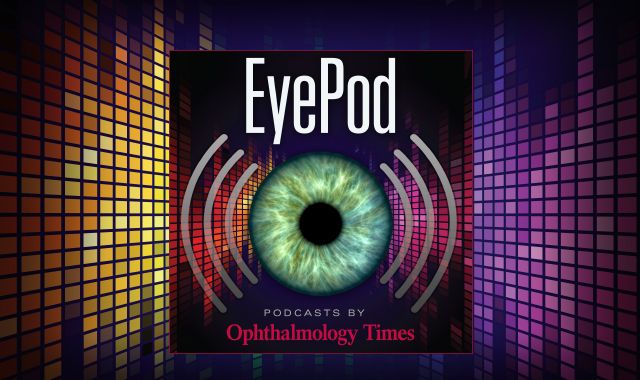News
Article
FDA accepts NDA for epi-on corneal crosslinking Epoxia from Glaukos
Author(s):
Key Takeaways
- Glaukos's Epioxa NDA has received FDA's "Day 74" notification, with a PDUFA date set for October 20, 2025.
- Epioxa offers a non-invasive corneal cross-linking therapy for keratoconus, enhancing corneal strength without epithelial removal.
A PDUFA date has been set for October 20, 2025. If approved, Epoxia will be the first epi-on corneal crosslinking on the market.
(Image Credit: AdobeStock/may1985)

Glaukos has announced it has received the “Day 74” notification from the US Food and Drug Administration (FDA) acknowledging the previously submitted New Drug Application (NDA) for Epioxa is sufficiently complete to permit a substantive review.1 Glaukos had originally filed the NDA with the FDA at the end of 2024.2
A Day 74 letter from the FDA is a key part of the NDA process, which confirms A PDUFA goal date, confirms standard versus priority review, and communicates any filing review issues identified by the FDA.3
A Prescription Drug User Fee Act (PDUFA) date for the completion of the FDA’s review of the Epioxa NDA has been set for October 20, 2025, reflecting a standard 10-month review period.1
Epioxa is a next-generation epi-on corneal cross-linking (iLink) therapy for the treatment of keratoconus. The company states that its iLink therapies use proprietary, bio-activated drug formulations designed to strengthen corneal tissue and halt the progression of keratoconus. Furthermore, Epioxa utilizes a proprietary, novel drug formulation designed to penetrate the epithelial layer of the cornea, a stronger UV-A irradiation protocol, and supplemental oxygen to enhance cross-linking.1
Thomas Burns, Glaukos chairman and chief executive officer, commented on the PDUFA date and the NDA approval in a press release from the company.1
“The acceptance of the Epioxa NDA represents another important step in being able to provide keratoconus patients and the ophthalmic community with the first FDA-approved, non-invasive corneal cross-linking drug therapy that does not require removal of the corneal epithelium, the outermost layer of the front of the eye,” said Burns. “We look forward to working closely with the FDA throughout their review process and continue to believe Epioxa, which is designed to reduce procedure times, improve patient comfort, and shorten recovery time, represents a potentially meaningful advancement in the treatment paradigm for patients suffering from keratoconus.”
The NDA submission from Glaukos included data from 2 Phase 3 pivotal trials of Epioxa, which both successfully achieved primary efficacy endpoints and demonstrated favorable tolerability and safety profiles. Data from one of the phase 3 studies demonstrated a clinically meaningful and statistically significant improvement in maximum corneal curvature (Kmax) at 12 months compared to the sham/placebo-controlled arm. Additionally, treatment was generally well tolerated, with 91.5% of enrolled treatment patients completing the 12-month trial, compared to 90.9% of enrolled control patients.4
A 2024 study unearthed a higher than expected prevalence of keratoconus among children. Prior to this study, the widely accepted prevalence of keratoconus in the adult population was 1:2000, which was based on an adult population in Olmsted County, Minnesota, in 1986. The 2024 prospective, observational, single-center study by Harthan et al examined patients aged 3 to 18 years who presented for a comprehensive eye exam in the Chicago area between 2017 and 2019. Among these, 6 of 2007 patients presented with keratoconus, suggesting a prevalence of 1:334. Three of the 2007 subjects were classified as keratoconus suspects (prevalence, 1:669) and 9 of 2007 were classified as keratoconus or keratoconus suspects (1:223). The authors urged clinicians to screen more patients for keratoconus to catch the disease earlier.5
References:
Glaukos announces FDA acceptance of NDA submission for Epioxa. Published February 24, 2025. Accessed February 24, 2025. https://www.businesswire.com/news/home/20250224038650/en/Glaukos-Announces-FDA-Acceptance-of-NDA-Submission-for-Epioxa%E2%84%A2
Joy J. Glaukos submits NDA to FDA for Epioxa. Published December 23, 2024. Accessed February 24, 2025. https://www.ophthalmologytimes.com/view/glaukos-submits-nda-to-fda-for-epioxa
The new drug approval process: NDA submission and review. Hyman, Phelps & McNamara. Accessed February 24, 2025. https://www.fdli.org/wp-content/uploads/2022/04/Raver-Charles.pdf
Hutton D. Glaukos reports positive Phase 3 results for Epioxa. Published October 16, 2024. Accessed February 24, 2025. https://www.ophthalmologytimes.com/view/glaukos-reports-positive-phase-3-results-for-epioxa
Harthan JS, Gelles JD, Block SS, et al. Prevalence of keratoconus based on Scheimpflug corneal tomography metrics in a pediatric population from a Chicago-based school age vision clinic. Eye Contact Lens. 2024;50(3):121-125. doi:10.1097/ICL.0000000000001072
Newsletter
Don’t miss out—get Ophthalmology Times updates on the latest clinical advancements and expert interviews, straight to your inbox.





